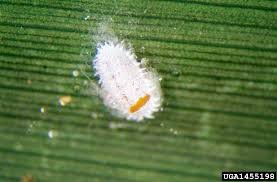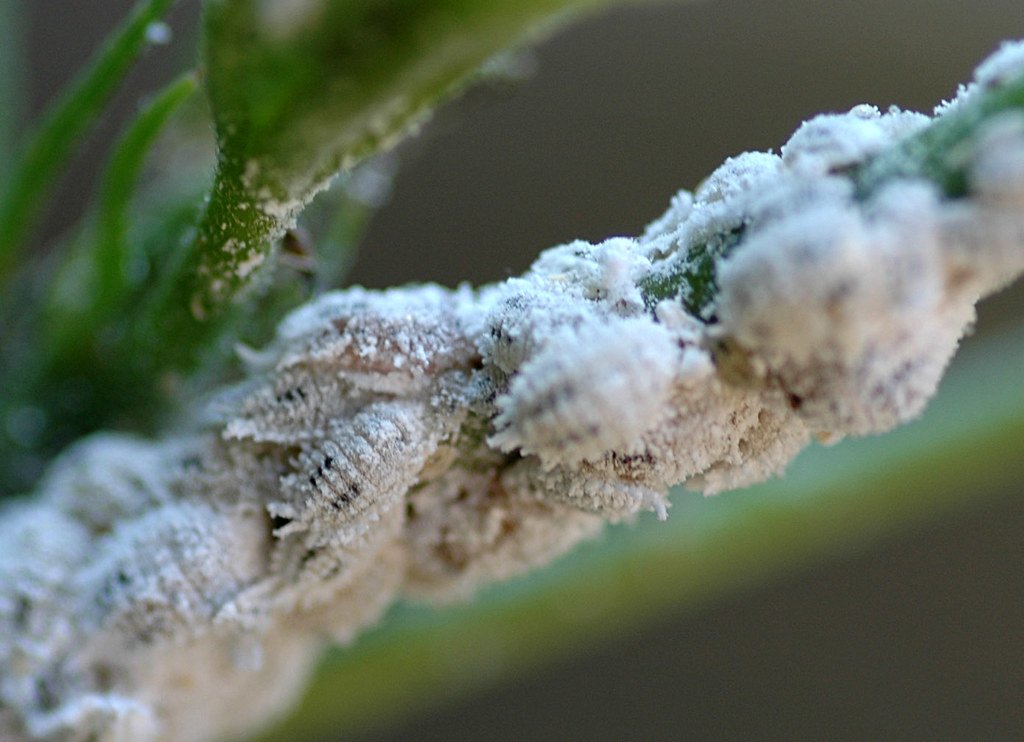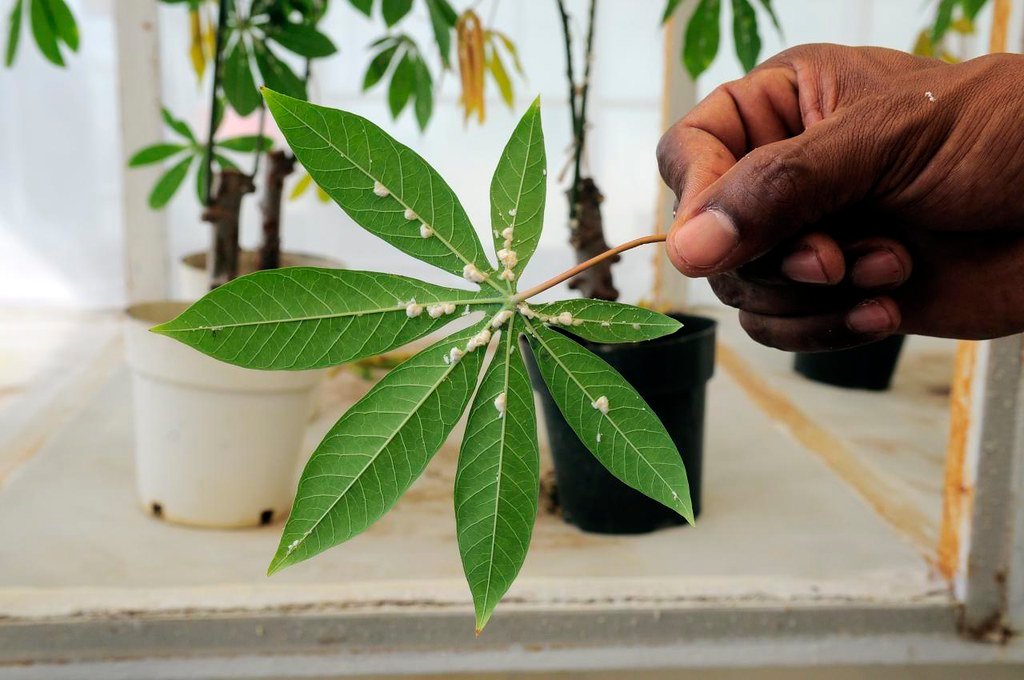Identification of Mealybugs:
- Appearance: Soft-bodied insects covered with chalky white and waxy powder.
- Damage Signs:
- They suck sap from young fruits, leaves, and twigs, weakening the plants.
- White cottony masses appear on leaves, fruits, and branches.
- Presence of ants, which are attracted to the honeydew excreted by mealybugs.
- Leaves fall off and branches die, potentially leading to the death of the entire tree.

Management:
- Isolation and Removal:
- Remove the affected tree far from other trees to prevent the spread of infestation.
- Chemical Control:
- Use imidacloprid insecticides .
- Application: Mix 2 ml of insecticide in 1 liter of water and spray on the affected areas.
- Timing: Spray in the afternoon or evening (never in direct sunlight to avoid burning the leaves).
- Pruning:
- Cut off heavily infested branches and dispose of them properly.
Pre-Preparation and Monitoring:
- Inspect the garden regularly and check tree branches frequently.
- Clean off any visible white cottony masses immediately.
- Spray neem oil on all plants every 10-15 days as a preventive measure.
Home Remedies for Mealybug Control:
- Soapy Water:
- Spray affected plants with a solution of water mixed with detergent, liquid dish soap, or shampoo.
- Neem Oil:
- Control mealybugs by spraying neem oil three times over ten days on affected plants.
- Tobacco Powder and Soap Solution:
- Mix 10 grams of tobacco powder, 5 grams of soap powder, and neem leaf juice in every liter of water and spray.
- Mechanical Removal:
- Remove and destroy infected parts along with the insects.
- Use a strong stream of water to wash off mealybugs from plants in the initial stage of infestation.

Final Notes:
- For minor infestations, home remedies can be effective.
- For severe infestations, it may be necessary to discard heavily infested plants or use stronger insecticides like those in the cypermethrin group.

